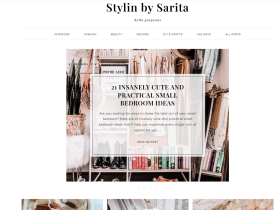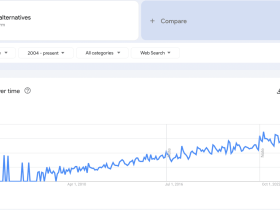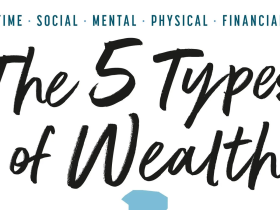Once upon a time, long long ago, few years back, families would gather around the television to watch their favorite shows, flipping through cable channels or tuning in to the latest blockbuster on premium networks. Today, the landscape of home entertainment has undergone a dramatic shift—YouTube has taken over the living room.
YouTube has become the most-watched streaming platform, even surpassing Netflix. According to YouTube CEO Neal Mohan, viewers in the U.S. now predominantly watch YouTube on their TVs rather than smartphones or computers. Collectively, users watch over one billion hours of YouTube content on TV screens daily. This isn’t just casual viewing; it’s a fundamental change in how people consume content.
YouTube TV, the platform’s paid live television service, has also played a significant role in its dominance. With more than 8 million subscribers, YouTube TV has established itself as a major player in the cord-cutting movement, offering an alternative to traditional cable and satellite services.
How Did YouTube Become the New TV?
Several factors have contributed to YouTube’s transformation from a site known for cat videos and viral pranks to the leading platform for premium content consumption.
When the COVID-19 pandemic forced people indoors, screen time surged, and so did YouTube’s dominance on TV screens. With live sports on hold, movie theaters closed, and traditional television struggling to adapt, YouTube became the go-to source for entertainment. Viewers sought out everything from at-home workout videos to live-streamed concerts, cementing YouTube’s place in daily routines.
Even as restrictions eased, the habit of watching YouTube on TV stuck. According to The New York Times, this shift wasn’t temporary—viewers continued engaging with YouTube as their primary content source, replacing traditional TV time.
Unlike traditional streaming services that rely on big-budget productions, YouTube thrives on its vast variety of content. Whether you’re into podcasts, live sports, educational videos, music festivals, or even just a daily vlog, YouTube offers something for every demographic. Its open platform allows for niche interests to flourish, making it appealing to audiences that mainstream entertainment often overlooks.
Moreover, YouTube has become the go-to source for big cultural moments. From election coverage to World Cup highlights, YouTube serves as a digital town square where people gather to experience major events.
YouTube has consistently improved its TV app to make the experience more intuitive and engaging. New features, such as an enhanced browsing interface, voice search, and curated recommendations, make finding content as easy as channel surfing.
More importantly, YouTube understands its dual role as both a video-sharing platform and a social network. The TV app now includes interactive elements that encourage engagement, allowing viewers to see comments, participate in polls, and connect with creators—something traditional TV could never offer.
The Creator Economy: YouTube’s Secret Weapon
One of YouTube’s biggest advantages over competitors is its massive community of creators. Unlike Netflix, which spends billions producing original content, YouTube’s business model shifts the production cost to creators.
Here’s why that’s important:
- No financial loss on low-performing content – If a YouTube video doesn’t generate views, YouTube doesn’t lose money. Instead, the platform simply collects 45% of ad revenue from successful videos.
- Diverse and experimental content – Creators are constantly innovating, producing talk shows, short films, long-form documentaries, and even episodic series that rival Hollywood productions.
- Direct creator-to-audience connection – Many content creators prefer YouTube over traditional entertainment avenues because it gives them more control and immediate feedback from their audience.
The result? A self-sustaining content ecosystem that continuously evolves, offering fresh, engaging material every day.
What’s Next for YouTube?
YouTube isn’t slowing down. It’s actively investing in new features to further cement its position as the dominant streaming platform.
AI-Powered Tools for Creators
YouTube is rolling out AI tools that help creators generate video ideas, titles, and thumbnails, making content creation easier and more effective. Additionally, automatic dubbing in multiple languages will allow creators to reach a global audience with minimal effort.
The Second Screen Experience
Recognizing that viewers often use multiple devices at once, YouTube is introducing a “second screen experience.” This feature allows users to interact with the videos they’re watching on TV through their phones—whether it’s leaving comments, participating in live chats, or even making purchases directly from a video.
New Ad Formats for TV Screens
As more people watch YouTube on TV, advertisers are taking notice. The platform is introducing pause ads and QR code-based ads that encourage engagement without interrupting the viewing experience.
The Battle with Netflix and Traditional TV
While YouTube dominates video streaming, it faces competition on multiple fronts. Netflix, for instance, is actively exploring podcast deals, hoping to attract audiences who consume talk shows and interviews in video format. Given that 89% of Gen Z podcast listeners prefer podcasts with video, this could be a smart move.
According to data, YouTube is already the most-used platform for podcasts in the U.S. This means YouTube isn’t just competing with Netflix for entertainment hours—it’s also challenging Spotify and Apple Podcasts for audio-visual content consumption.
YouTube’s rise to dominance as the most-watched streaming platform marks a major shift in how we define “television.” It’s no longer just about scheduled programming and big-budget productions. Instead, TV has become an interactive, on-demand, and creator-driven experience, powered by platforms like YouTube.
So, the next time you turn on your smart TV, there’s a good chance you won’t be reaching for the remote to browse cable channels. Instead, you’ll probably be clicking on a YouTube video—just like millions of other viewers worldwide.





